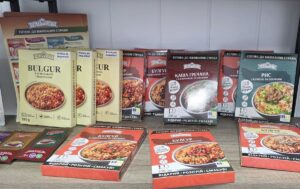
The Dnipro-based Sol Union group of companies has begun construction of the Neo Food System factory in the Kyiv region. The project capacity of the enterprise will allow it to produce 60,000 ready-made meals per day. The factory will produce ready-to-eat chilled, pasteurized, sterilized, and deep-frozen meals. The group’s investment in this project amounts to UAH 220 million.
This was announced by Dmytro Kysilevsky, Deputy Chairman of the Verkhovna Rada Committee on Economic Development. He noted that Sol Union took advantage of several programs of the “Made in Ukraine” policy for the development of Ukrainian manufacturers to implement its current investment projects. In particular, the group took advantage of a state grant of UAH 8 million for processing, purchasing autoclaves manufactured by the Rozfood plant in Kyiv. In addition, the group attracted loans from the “5-7-9” program. It plans to further expand its loan portfolio.
The launch of the plant will create 260 new jobs in the Kyiv region. The production area is 4,000 square meters.
To implement the Neo Food System factory project, the group purchased a ready-made industrial premises that already has the necessary connected electricity, water supply, treatment facilities, and drainage. The installation of the enterprise’s equipment will begin in April 2026. The launch of production is scheduled for June, and the project is expected to reach its design capacity in September 2026. The first exports to EU countries are planned for 2027.
The Sol Union group of companies includes two food production and packaging factories, a vegetable storage facility with a capacity of 5,000 tons, and warehouses with a total area of 17,000 square meters. Until now, all of the group’s enterprises were located in Dnipro.
The “Made in Ukraine” development policy for Ukrainian manufacturers combines state programs aimed at developing production, attracting investment, and stimulating exports.
FACTORY, FOOD, Kysilevsky, PRODUCTION, semi-finished product
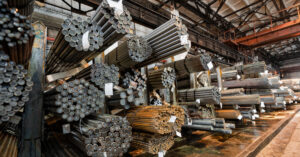
According to preliminary data, Ukrainian metallurgical companies increased their total rolled steel production by 3.9% in January-November this year compared to the same period last year, from 5.741 million tons to 5.966 million tons.
According to information from the Ukrmetallurgprom association on Monday, steel production during this period fell by 3.1% to 6.813 million tons. In November, 589,100 tons of rolled steel and 641,100 tons of steel were produced.
For more information on the largest steel producers and global industry trends, see the Experts Club video analysis review available on YouTube: Experts Club — Leaders of the global steel industry 1990–2024
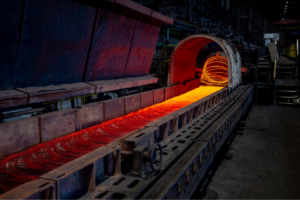
The Kametstal plant, part of the Metinvest mining and metallurgical group (Kamensk, Dnipropetrovsk region), has completed the reconstruction of continuous casting machine No. 1 in the converter shop as part of its 2025 investment program.
According to the company, following the successful completion of the second stage of the investment project, key equipment of the machine’s pulling and straightening devices has been upgraded.
It is specified that new motor reducers for the pulling and straightening device were installed on each of the seven streams of the CCMC-1, on which thermal shielding was also performed.
“In this way, steelmakers have solved the urgent issue of extending the service life of motor reducers, which ensure the stable movement of the pulling and straightening devices. Previously, this equipment failed prematurely due to the destructive effects of high temperatures,” the report states.
Encoders were also installed and put into operation on all upper motors of the gear motors. These devices, thanks to feedback in control, make it possible to control and stabilize the speed of the continuously cast billet and, thus, increase the accuracy of its cutting.
The second stage of the reconstruction of the No. 1 continuous casting machine was carried out without additional machine stoppages, given the need to fulfill orders for commercial steel products, particularly those of higher quality, for domestic and European customers. Each stream was technically prepared in advance for the replacement of equipment, and during the technological stoppage, updates were carried out in pit stop mode.
As a result of the second stage of reconstruction, metallurgists received a number of technical and economic advantages: several times longer service life of the motor reducers of the stoves; maximum precision of cutting the billets, which made it possible to reduce metal consumption. In addition, the technical solutions implemented optimized the operation of the pulling and straightening device to reduce electricity consumption on the upper and lower motor reducers by 1.2 kW*hour while maintaining stable casting on the machine.
Kametstal is part of the Metinvest Group.
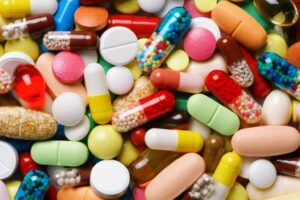
The pharmaceutical company Galichpharm JSC (Lviv) plans to increase sales by 15% by the end of 2025, according to a report posted on its website.
According to the report, in the first nine months of 2025, Galichpharm produced 4.753 million packages of finished medicines worth UAH 904.94 million.
The average cost of one package of manufactured medicines in the form of injections was UAH 132.24, infusions – UAH 32.35, liquids and syrups – UAH 67.9, and tablets – UAH 22.24.
The company’s revenue for January-September reached UAH 252.449 million.
In addition, the company reports that exports accounted for 9.13% of total sales, and its products were supplied abroad for more than UAH 23 million. The company exports to the markets of Kazakhstan, Georgia, Uzbekistan, Latvia, and other countries.
According to the company’s estimates, Galichpharm ranks fifth in terms of retail sales in monetary terms for the first nine months of 2025, with a market share of 1.3%.
As reported, at the end of 2024, Galichpharm reduced its net profit by 39% compared to 2023, to UAH 13.705 million, while in 2023 this figure was UAH 22.52 million.
As reported, the investment company Sky Development won an open auction organized by the Deposit Guarantee Fund and acquired the rights to claim the insolvent JSC Bank Finance and Credit under ten loan agreements with leading Ukrainian pharmaceutical companies: JSC Galichpharm and JSC Kyivmedpreparat. According to Sky Development, the total amount of its claims exceeds UAH 3.5 billion.
For their part, Kyivmedpreparat and Galichpharm stated that the information disseminated by Sky Development is “unreliable, manipulative, and shows signs of deliberate discrediting of the companies’ activities.” In particular, both companies denied the existence of “multibillion-dollar debts” to Sky Development. The pharmaceutical companies regarded the statements of Sky Development LLC as “an attempt to illegally create non-existent creditor debt for the purpose of a possible raider takeover of the companies.”
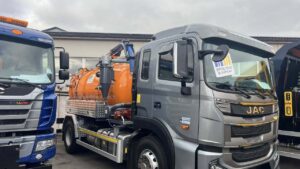
Budshlyakhmash has begun construction of a new 3,000 sq. m production complex in Brovary (Kyiv region), which will be used to manufacture vehicle frames, allowing the company to increase the localization of municipal and special equipment it produces from the current 40-60% to 75%, according to Dmytro Kysilevsky, deputy chairman of the Verkhovna Rada Committee on Economic Development.
“The start of production of vehicle frames is scheduled for mid-2026,” he wrote on Facebook on Tuesday.
According to him, this indicator (40-60% localization) was achieved thanks to licensed SKD assembly of equipment based on Daewoo and JAC chassis with the right to use its own VIN code.
“The contract with these companies provides for permission to replace imported components with Ukrainian ones,” Kysilevsky said.
The MP noted that after the launch of frame production, Budshlyakhmach plans to establish the production of wheel axles, as well as order tires, fuel tanks, and plastic components from other Ukrainian manufacturers.
“Next spring, Budshlyakhmach plans to start developing a new production site on the outskirts of Brovary to create an industrial park with a machine-building cluster. Forty thousand square meters of industrial buildings will be built on an area of 11 hectares. The total investment in this project is about $40 million,” Kysilevsky said.
According to him, investment in new production facilities is stimulated by localization legislation. This year, it requires a mandatory Ukrainian component of at least 25% in public procurement of equipment, and in 2026, the minimum localization level will increase to 30%.
Budshlyakhmash manufactures dump trucks, garbage trucks, truck cranes, sand spreaders and watering machines, tow trucks, and other equipment. In 2025, production volumes will be about 70 units per month.
According to opendatabot, in 2024, the Spetsbudmash plant in Brovary, where Budshlyakhmash Group’s automotive equipment is manufactured, earned UAH 4.2 billion in revenue and UAH 298.5 million in net profit, and in the first nine months of this year, UAH 3.3 billion and UAH 265 million, respectively.
The ultimate beneficiaries are Myroslav and Oleksandr Guiwan.
The Budshlyakhmash group of companies is the official representative in Ukraine of domestic and foreign manufacturers of special, road, and municipal equipment (JAC, Scania, Renault, MAN, Pronar, Daewoo, and Spetsbudmash brands).
Last year, Budshlyakhmash Trading House LLC received UAH 2.18 billion in revenue and UAH 22.9 million in net profit, and in January-September 2025, UAH 138.7 million and UAH 1.9 million, respectively.
The ultimate beneficiary is Myroslav Guiwan.
Budshlyakhmash, EQUIPMENT, FACTORY, frame, Kysilevsky, PRODUCTION